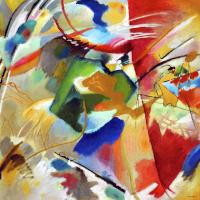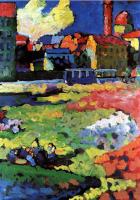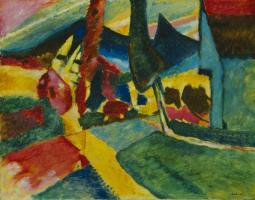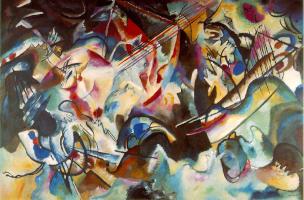Wassily Kandinsky
Wassily Kandinsky, Russian-born painter and writer on art, one of the most important pioneers of abstract art. He abandoned a promising university career teaching law, partly under the impact of an exhibition in Moscow of French *Impressionists, at which one of Monet’s Haystack pictures made a particularly lasting impression upon him, and in 1896 went to Munich to study painting.
In 1901 he was one of the founders of an avant-garde exhibiting society called the Phalanx, the main forum for Jugendstil (Art Nouveau) in Germany, and in 1902 he joined the Berlin Sezession. Between 1903 and 1908 he travelled widely in western Europe and Africa. His pictures at the turn of the century combined features of Art Nouveau with reminiscences of Russian folk art, to which he added a Fauve-like intensity of colour. In 1908 he returned to Munich and began to eliminate the representational element from his work, until, in a series of Compositions, Improvisations, and Impressions, done between 1910 and 1913, he arrived at pure abstraction. (The best collection of works from this period is in the Lenbachhaus in Munich.) Kandinsky himself said that his understanding of the power of non-representational art derived from a night when he went into his studio in Munich and failed to recognize one of his own paintings that was lying the wrong way up, seeing in it a picture ‘of extraordinary beauty glowing with an inner radiance’.
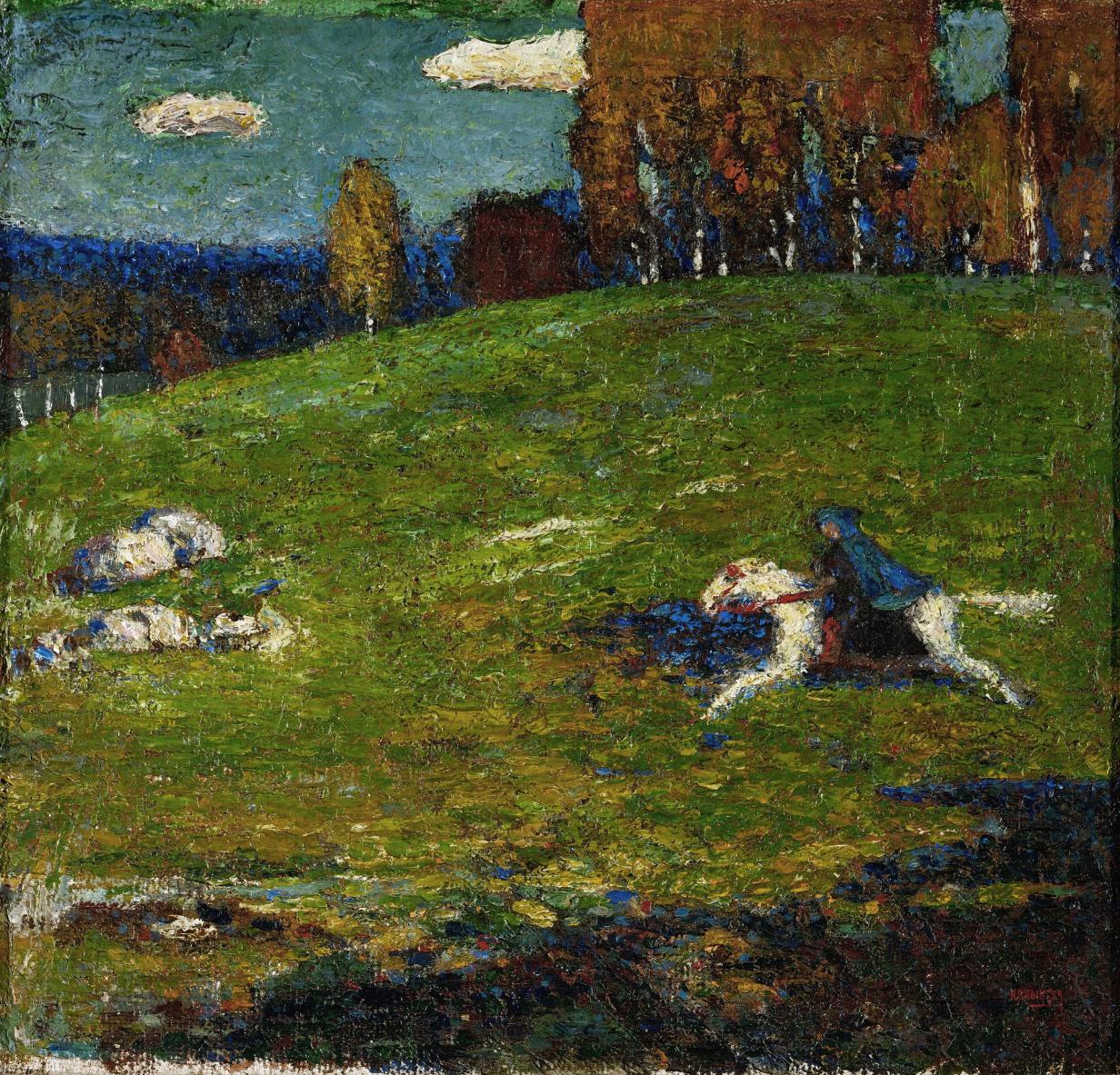 From 1911 he was one of the most active figures in Der Blaue Reiter almanac, editing
along with Franz Marc. In 1914 he returned to Russia, where he gained several
distinguished academic posts. However, being out of sympathy with the new ideas
that subordinated fine art to industrial design, he left Russia in 1921 to take
up a teaching post in the Bauhaus, where he remained until it was closed in 1933.
In 1927 he became a German citizen. He left Germany for France in 1933
and lived at Neuilly-sur-Seine. He became a French citizen in 1939.
From 1911 he was one of the most active figures in Der Blaue Reiter almanac, editing
along with Franz Marc. In 1914 he returned to Russia, where he gained several
distinguished academic posts. However, being out of sympathy with the new ideas
that subordinated fine art to industrial design, he left Russia in 1921 to take
up a teaching post in the Bauhaus, where he remained until it was closed in 1933.
In 1927 he became a German citizen. He left Germany for France in 1933
and lived at Neuilly-sur-Seine. He became a French citizen in 1939.
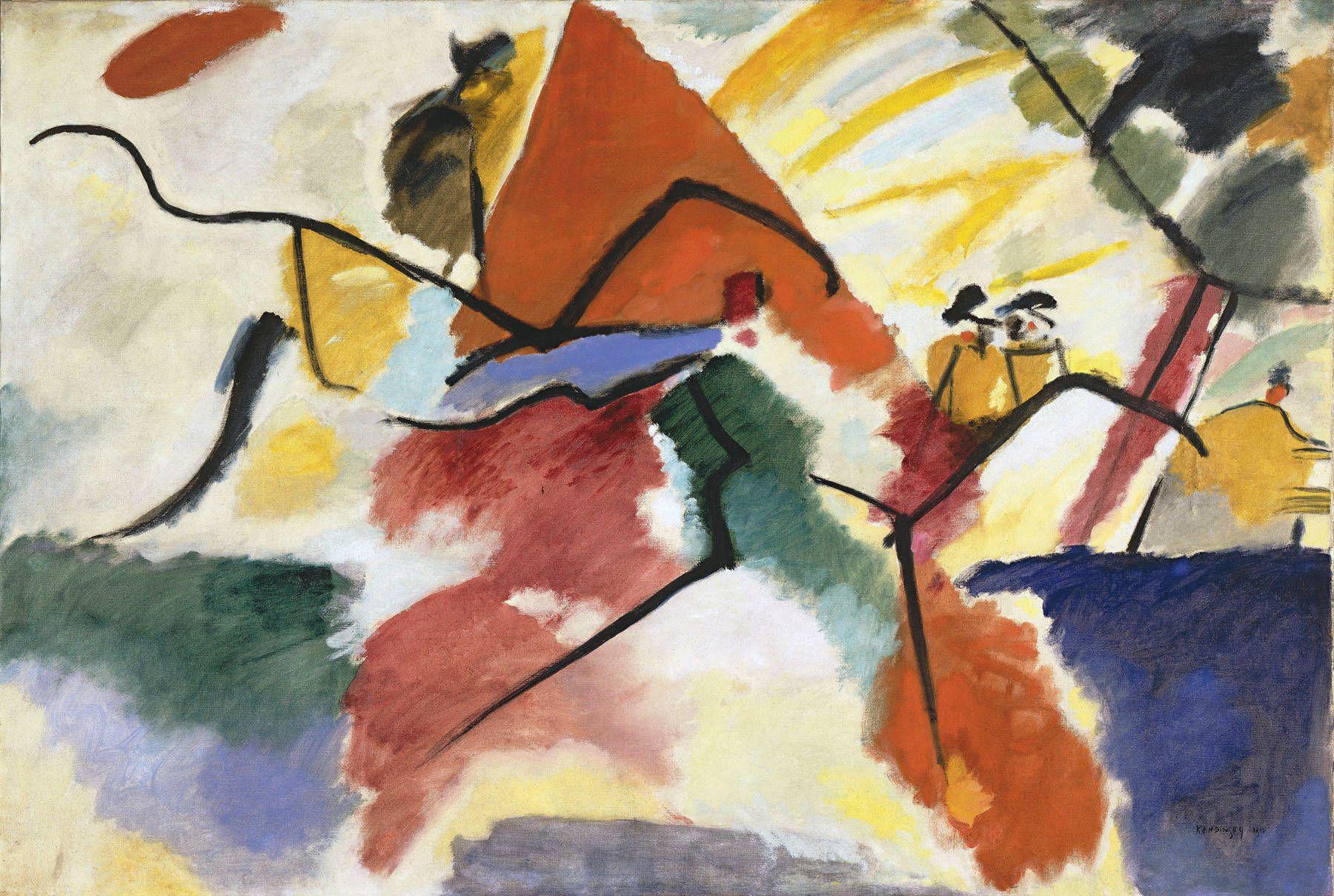 Kandinsky’s style was based on the non-representational properties of form
and colour; used to express the full range of his memories, emotions and imagination.
Kandinsky’s style was based on the non-representational properties of form
and colour; used to express the full range of his memories, emotions and imagination.
Kandinsky was one of the most influential artists of his generation both for his painting and for his writing. He was in the forefront of those who investigated the expressive attributes of artistic materials without reference to natural appearances. His progress towards non-figurative abstraction proceeded alongside his philosophical views about the nature of art, which were influenced by theosophy and mysticism. He did not completely repudiate representation, but he held that the ‘pure’ artist seeks to express only ‘inner and essential’ feelings and ignores the superficial and fortuitous. His chief works setting forth his theories of abstract pictorial composition are Über das Geistige in der Kunst (Concerning the Spiritual in Art, 1912), Rückblicke (Reminiscences, 1913), and Punkt und Linie zu Fläche (Point, Line and Surface, published in 1926 as a Bauhaus pamphlet).

